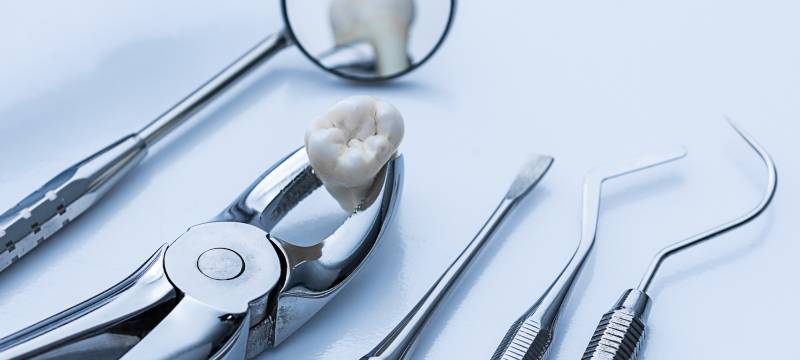
Oral surgery is a specialized branch of dentistry that deals with surgical procedures involving the mouth, jaws, and facial structures. While routine dental care focuses on preventive and restorative treatments, oral surgery becomes necessary when more complex issues arise. In this blog, we will delve into the realm of oral surgery, exploring various procedures, types, and their definitions.
Definition of Oral Surgery:
Oral surgery, also known as oral and maxillofacial surgery, encompasses a range of surgical procedures that address issues related to the oral cavity and surrounding structures. Oral surgeons are highly trained dental professionals who perform these surgeries to correct, treat, or enhance various conditions affecting the mouth, jaws, face, and neck.
Common Oral Surgery Procedures:
1. Tooth Extractions:
Definition: Tooth extraction involves the removal of a tooth or multiple teeth from the oral cavity. This procedure may be necessary when a tooth is severely decayed, damaged, or causing other dental issues.
Examples:
Impacted Wisdom Teeth: Wisdom teeth, also known as third molars, often become impacted (unable to fully emerge) and can lead to pain, infection, or damage to neighboring teeth.
Overcrowded Teeth: In cases of severe crowding, a dentist might recommend extracting a tooth or multiple teeth to create space and improve alignment.
Decayed Teeth: When a tooth is extensively decayed and cannot be restored through procedures like root canal therapy or crowns, extraction may be the only viable option.
2. Dental Implant Placement:
Definition: Dental implant placement is a surgical procedure involving the insertion of artificial tooth roots (implants) into the jawbone. This is followed by the attachment of prosthetic teeth, restoring both function and appearance.
Examples:
Single Tooth Replacement: When a patient is missing a single tooth, a dental implant can be used to anchor a crown, mimicking the natural tooth.
Multiple Teeth Replacement: Implants can support bridges, replacing several missing teeth in a row.
Full Arch Replacement: In cases of complete tooth loss in an arch, a series of implants can support a full set of dentures, providing stability and improved chewing ability.
3. Orthognathic Surgery:
Definition: Orthognathic surgery involves the surgical correction of jaw and facial deformities to improve function, aesthetics, and overall oral health.
Examples:
Correcting Bite Misalignments: Surgical procedures may be performed to align the upper and lower jaws properly, addressing issues like overbites, underbites, or crossbites.
Congenital Abnormalities: Some individuals are born with facial or jaw deformities that can be corrected through orthognathic surgery, improving facial symmetry.
Improving Facial Appearance: In addition to functional benefits, orthognathic surgery can enhance the overall facial profile and appearance.
4. Maxillofacial Trauma Surgery:
Definition: Maxillofacial trauma surgery involves the treatment of facial injuries, including fractures to the jaw, nose, or orbital bones.
Examples:
Jaw Fractures: Surgical intervention may be required to stabilize and align fractured jaw bones, ensuring proper healing and function.
Facial Fractures: Procedures to repair fractures to the nose, cheekbones, or orbital bones, restoring facial aesthetics and function.
Soft Tissue Injuries: Surgical repair of soft tissue injuries, such as lacerations or damage to the facial skin and muscles.
5. Oral Pathology Surgery:
Definition: Oral pathology surgery involves the removal of tumors, cysts, or abnormal tissues in the oral cavity, often to diagnose and treat oral diseases or cancerous growths.
Examples:
Tumor Removal: Surgically excising benign or malignant tumors in the mouth to prevent further growth and potential spread.
Cyst Removal: Surgical removal of cysts that may form in the oral cavity, preventing damage to surrounding tissues and structures.
Biopsy Procedures: Taking tissue samples during surgery for diagnostic purposes, especially in cases where cancer is suspected.
6. Cosmetic Oral Surgery:
Definition: Cosmetic oral surgery involves procedures aimed at enhancing the aesthetic appearance of the face and mouth, helping individuals achieve their desired smile and facial harmony.
Examples:
Chin Augmentation: Surgical procedures to reshape or enhance the chin, improving facial balance and profile.
Lip Enhancement: Surgical interventions or injections to enhance the size and shape of the lips for a more youthful and appealing appearance.
7. Reconstructive Oral Surgery:
Definition: Reconstructive oral surgery focuses on restoring form and function after trauma, disease, or congenital abnormalities, contributing to improved oral health and overall well-being.
Examples:
Jaw Reconstruction: Surgical procedures to rebuild or repair the jawbone, often necessary after trauma, tumor removal, or congenital defects.
Tissue Grafting: Utilizing grafts from other parts of the body or synthetic materials to restore lost or damaged tissues, aiding in the reconstruction of the oral and facial structures.
Conclusion:
Oral surgery plays a crucial role in addressing a wide range of dental and facial concerns. From routine tooth extractions to complex maxillofacial trauma surgeries, oral surgeons are skilled professionals dedicated to improving the health, function, and aesthetics of the oral and facial structures.
Understanding the various procedures and types of oral surgery helps demystify this field and highlights its significance in maintaining overall oral health. If you’re facing any oral issues beyond the scope of routine dental care, consulting with an oral surgeon can pave the way to a healthier and more confident smile. Sharq Dental Center, expert oral surgeons are dedicated to providing high-quality care, utilizing state-of-the-art technology and techniques.
